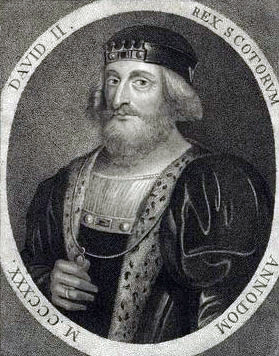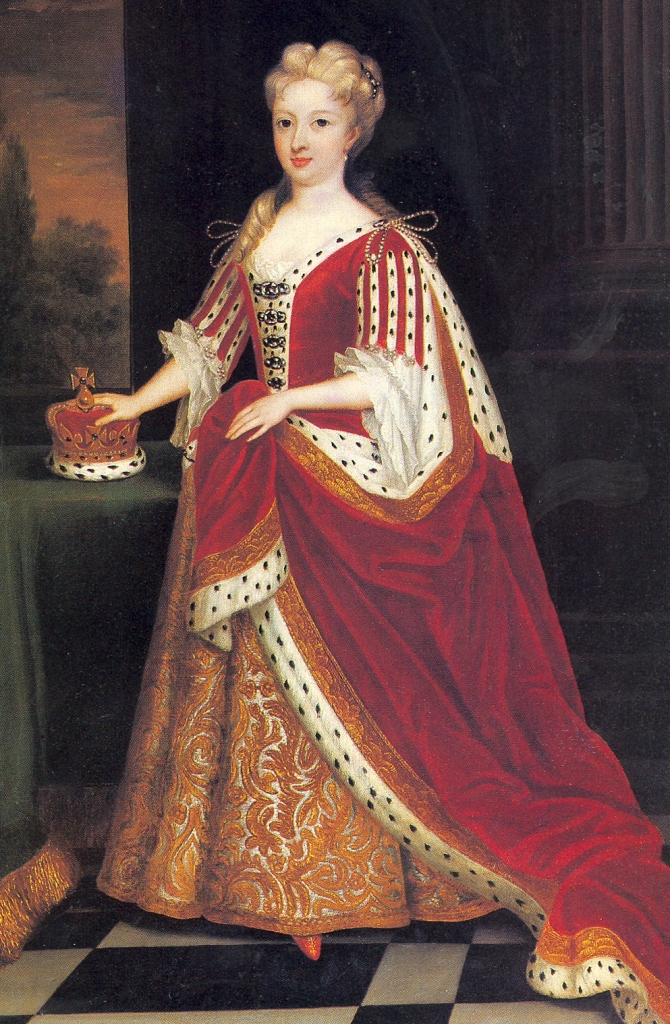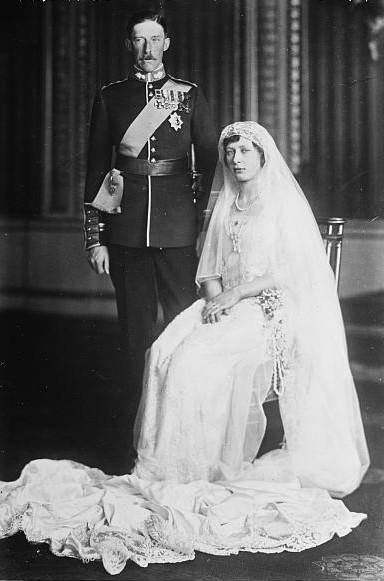by Susan Flantzer
© Unofficial Royalty 2025

Queen Mary and King Frederik X; Photo: © Hasse Nielsen
A unified Danish monarchy can be traced back to Gorm the Old who died in 958. In the 10th and 11th centuries, several Kings of Denmark were also Kings of England. Denmark, Sweden, and Norway were ruled together under one monarch from 1397 until 1523 when Sweden seceded and became its own kingdom. In 1814, after the Napoleonic Wars, Denmark lost Norway to Sweden. Eventually, in 1905, the union between Sweden and Norway was dissolved and Norway became its own kingdom. Norway’s first king, Haakon VII, was born Prince Carl of Denmark, a son of King Frederik VIII of Denmark. The House of Oldenburg reigned in Denmark from 1448 – 1863 when the crown passed to the House of Schleswig-Holstein-Sonderburg-Glücksburg, a cadet branch of the same house, because there were no Oldenburg heirs.
The Danish Monarch
King Frederik X of Denmark
His Majesty King Frederik X is the current monarch of Denmark. In her New Year’s Speech on December 31, 2023, Frederik’s mother Queen Margrethe II announced that she would step down as Queen of Denmark on January 14, 2024, the 52nd anniversary of her accession.
The monarchs of Denmark have a long history of royal and noble titles. Historically Danish monarchs also used the titles King of the Wends and King of the Goths. In 1972, when Queen Margrethe II succeeded to the throne, she eliminated all titles except the style and title Her Majesty Queen of Denmark.
Only descendants of King Christian X and his wife Queen Alexandrine may inherit the Danish throne. The monarch must be a member of the Lutheran Evangelical Church and must have Parliament’s permission to marry. The succession law was changed in 1953 to allow female succession. The monarch at that time, King Frederik IX, had only three daughters. Before 1953, the Salic Law, which prohibits female succession, was in effect. As of 2008, the succession has been based on absolute primogeniture, meaning the eldest child is heir, regardless of gender. Since 1513, the regnal names of male Danish monarchs have traditionally alternated between Frederik and Christian.
The Danish Royal Consort

Queen Mary of Denmark; Credit – Wikipedia
The wives of Danish monarchs have been titled Queen of Denmark and styled Her Majesty. Her Majesty Queen Mary of Denmark, born Mary Donaldson in Hobart, Tasmania, Australia, is the current royal consort.
There have been only two reigning Queens of Denmark: Margarethe I, Queen of Denmark, Norway, and Sweden (reigned in Denmark 1387 –1412, reigned in Norway 1388 – 1412, reigned in Sweden 1389 – 1412) and Margrethe II, Queen of Denmark (reigned 1972 – 2024, abdicated). Queen Margrethe I’s husband was also a monarch, Haakon VI, King of Norway and Sweden, so a royal Danish title was unnecessary.
In 1967, the future Queen Margrethe II of Denmark married a commoner, Henri de Laborde de Monpezat, born in Talence, France. After his marriage, Henri was known by Henrik, the Danish version of his name, and was created a Prince of Denmark with the style His Royal Highness. In 2005, Queen Margrethe II gave her husband the title The Prince Consort of Denmark. In her New Year’s speech on December 31, 2015, Queen Margrethe II announced that Prince Henrik would slow down and give up most of his official duties beginning January 1, 2016. On April 14, 2016, Prince Henrik renounced the title of Prince Consort and reverted to His Royal Highness Prince Henrik of Denmark.
The Heir to the Danish Throne – Crown Prince of Denmark or Crown Princess of Denmark

Crown Prince Christian of Denmark; Photo: © Dennis Stenild
The eldest child of the Danish monarch, regardless of gender, automatically becomes the Crown Prince of Denmark or the Crown Princess of Denmark when his/her father or mother succeeds to the Danish throne. His Royal Highness Crown Prince Christian of Denmark, the eldest of the four children of King Frederik X, is the current heir to the throne. He automatically became Crown Prince of Denmark after his grandmother’s abdication and his father’s subsequent ascension to the Danish throne on January 14, 2024.
Count of Monpezat
Although the right to use the title is disputed, members of the Laborde de Monpezat family, the family of the late Prince Henrik of Denmark, born Henri Laborde de Monpezat in Talence, France, the husband of Queen Margrethe II, have styled themselves as Comte de Laborde de Monpezat (English: Count of Laborde of Monpezat) since the late nineteenth century.
On April 30, 2008, Queen Margrethe II conferred the title of Count of Monpezat (Greve af Monpezat in Danish), as a Danish title of nobility, on her two sons Crown Prince Frederik (now King Frederik X) and Prince Joachim. Crown Princess Mary (now Queen Mary of Denmark) became Countess of Monpezat, and when Prince Joachim married Marie Cavallier on May 24, 2008, she became Princess Marie of Denmark and Countess of Monpezat. Descendants born in a legal marriage also bear the title, so the sons of King Frederik X and Prince Joachim are all Counts of Monpezat and their daughters are all Countesses of Monpezat.
The Danish Royal House’s announcement:
Her Majesty the Queen has decided that His Royal Highness the Crown Prince and His Royal Highness Prince Joachim will be given the title of “Count of Monpezat”. Her Royal Highness Crown Princess Mary and His Royal Highness Prince Joachim’s future spouse Ms. Marie Cavallier will consequently bear the title of “Countess of Monpezat”. The title will also be borne by descendants born in lawful marriage, in accordance with the general rules applicable to this, which means that the title “Count of Monpezat” will be carried on by male descendants, while female descendants will bear the title “Countess of Monpezat”. This is a new, additional title that can be used in connection with the existing ones. The title does not affect the currently applicable predicates.
Prince and Princess of Denmark
King Frederik X and his family on the day of his accession to the Danish throne (Left to right: Princess Isabella, Crown Prince Christian, King Frederik X, Queen Mary, Princess Josephine, and Prince Vincent)
On September 28, 2022, the Danish Royal House announced changes for royal titles within the Danish Royal Family. Queen Margrethe II decided that, as of January 1, 2023, the children of her son His Royal Highness Prince Joachim would no longer hold the style and title of His/Her Highness Prince/Princess. Instead, they would only hold the title Count/Countess of Monpezat, with the style of His/Her Excellency. Prince Joachim had two sons with his first wife Alexandra Manley (divorced 2005), styled after her divorce, Her Excellency Countess Alexandra of Frederiksborg. He had one son and one daughter with his second wife Marie Cavallier, styled after her marriage, Her Royal Highness Princess Marie. It is unclear if this is a permanent change, and only the children of the monarch and the heir apparent will be Princes and Princesses of Denmark, or if it is a change just for the children of Prince Joachim, the second of Queen Margrethe II’s two sons.
As of January 1, 2023, Prince Joachim’s children are styled:
Here is the full statement issued by the Danish Royal House:
In April 2008, Her Majesty The Queen bestowed upon her sons, their spouses and their descendants the titles of count and countess of Monpezat. In May 2016, it was also announced that His Royal Highness Prince Christian, as the only one of The Queen’s grandchildren, is expected to receive an annuity from the state as an adult.
As a natural extension of this, Her Majesty has decided that, as of 1 January 2023, His Royal Highness Prince Joachim’s descendants can only use their titles as counts and countess of Monpezat, as the titles of prince and princess that they have held up until now will be discontinued. Prince Joachim’s descendants will thus have to be addressed as excellencies in the future. The Queen’s decision is in line with similar adjustments that other royal houses have made in various ways in recent years.
With her decision, Her Majesty The Queen wishes to create the framework for the four grandchildren to be able to shape their own lives to a much greater extent without being limited by the special considerations and duties that a formal affiliation with the Royal House of Denmark as an institution involves. All four grandchildren maintain their places in the order of succession.
Count of Rosenborg

Count Ingolf of Rosenborg, his wife Countess Sussie (center), and his sister Princess Elisabeth of Denmark; Photo: BilledBladet.dk
The title Count of Rosenborg is named after Rosenborg Castle, a renaissance castle in Copenhagen, Denmark. The title Count of Rosenborg has been granted to seven Danish princes, all of whom relinquished their position within the Danish Royal Family upon marrying without official consent from the Danish monarch. The first three, Aage, Erik, and Viggo, retained some of their royal status, however, the others lost all of their official connection to royalty, being delegated to the highest level of the Danish aristocracy.
- 1914 – HRH Prince Aage of Denmark – eldest son of Prince Valdemar (son of King Christian IX) became His Highness Prince Aage, Count of Rosenborg
- 1924 – HRH Prince Erik of Denmark – third son of Prince Valdemar (son of King Christian IX) became His Highness Prince Erik, Count of Rosenborg
- 1924 – HRH Prince Viggo of Denmark – fourth son of Prince Valdemar (son of King Christian IX) became His Highness Prince Viggo, Count of Rosenborg
- 1948 – HH Prince Oluf of Denmark– younger son of Prince Harald (son of King Frederik VIII) became His Excellency Count Oluf of Rosenborg
- 1949 – HH Prince Flemming of Denmark – son of Prince Axel (son of Prince Valdemar – son of King Christian IX) became His Excellency Count Flemming of Rosenborg
- 1968 – HH Prince Ingolf of Denmark – elder son of Prince Knud (son of King Christian X) became His Excellency Count Ingolf of Rosenborg
- 1971 – HH Prince Christian of Denmark – younger son of Prince Knud (son of King Christian X) became His Excellency Count Christian of Rosenborg
The first three in the list above all gave up their status during the reign of King Christian X, their first cousin. He allowed them to retain the title of Prince (without the “of Denmark” designation), with the lesser style of His Highness. This was limited to them and their wives only and did not pass to their children. However, the Rosenborg title was granted to them with the provision that it would be passed down through male-line descendants. Sons continue to carry the title, while daughters retain it until they marry.
However, by 1948 when Prince Oluf relinquished his status, there was a new King on the throne, King Frederik IX. Privately, King Frederik IX was more accepting of unequal’ marriages, however, he feared that giving his consent would encourage previous royals who had lost their titles to re-claim their royal status and succession rights. So Princes Oluf, Flemming, Ingolf, and Christian gave up their royal status and became His Excellency Count <Name> of Rosenborg. They were no longer considered part of the Danish Royal House or Danish Royal Family and were relegated to the top level of the Danish aristocracy.
This article is the intellectual property of Unofficial Royalty and is NOT TO BE COPIED, EDITED, OR POSTED IN ANY FORM ON ANOTHER WEBSITE under any circumstances. It is permissible to use a link that directs to Unofficial Royalty.
Works Cited
- Bidragsydere til Wikimedia-projekter. (2015). Greve af Monpezat. Wikipedia.org; Wikimedia Foundation, Inc. https://da.wikipedia.org/wiki/Greve_af_Monpezat
- Changes in titles and forms of address in the Royal Family. (2022). Kongehuset.dk. https://www.kongehuset.dk/en/news/changes-in-titles-and-forms-of-address-in-the-royal-family
- Mehl, Scott. (2022). Change of Titles within the Danish Royal Family as of January 1, 2023. Unofficial Royalty. https://www.unofficialroyalty.com/change-of-titles-within-the-danish-royal-family/
- Mehl, Scott. (2014). King Frederik X of Denmark. Unofficial Royalty. https://www.unofficialroyalty.com/crown-prince-frederik-of-denmark/
- Mehl, Scott. (2014). The Danish Counts of Rosenborg. Unofficial Royalty. https://www.unofficialroyalty.com/the-danish-counts-of-rosenborg/
- Monarchy of Denmark. (2021). Wikipedia. https://en.wikipedia.org/wiki/Monarchy_of_Denmark
- The Royal House. (2025). Kongehuset.dk. http://kongehuset.dk/en
- Wikipedia Contributors. (2025). Count of Monpezat. Wikipedia; Wikimedia Foundation.


















